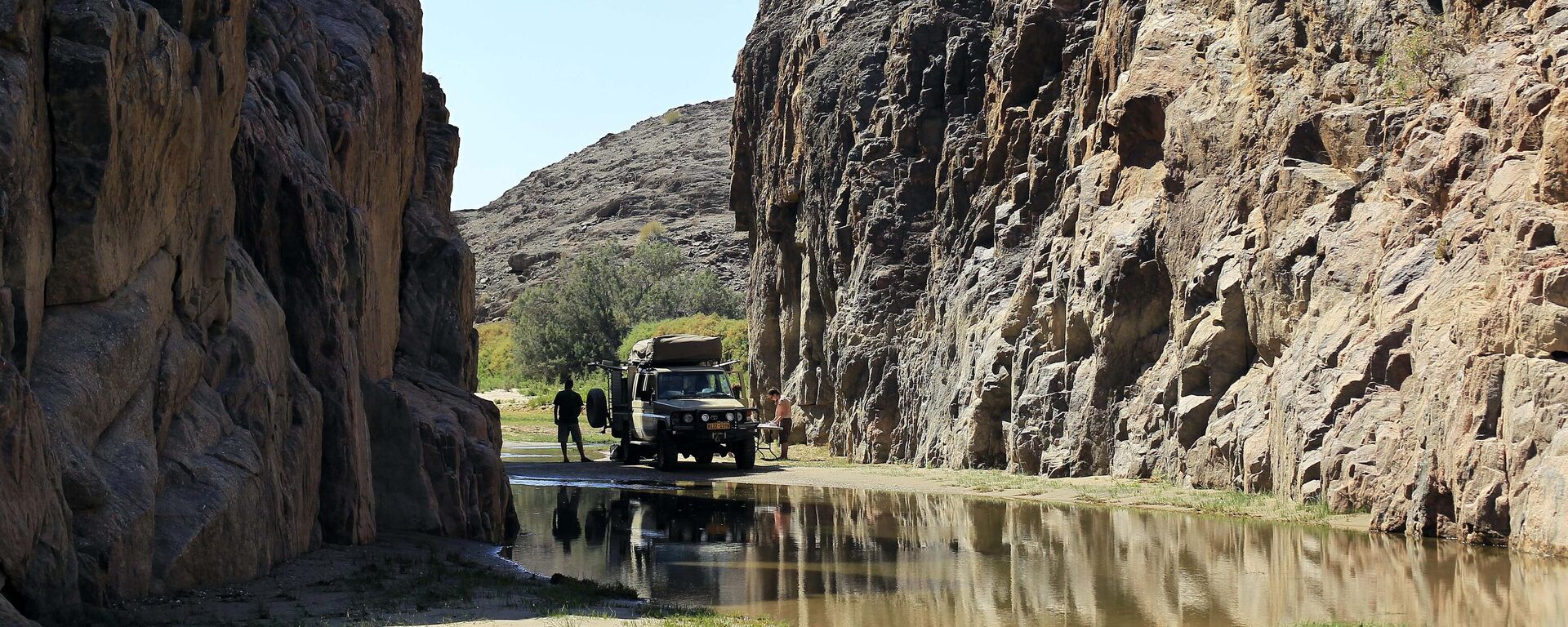https://en.sputniknews.africa/20240829/namibia-to-slaughter-over-300-zebras-83-elephants-to-feed-those-suffering-from-drought-1068056218.html
Namibia to Slaughter Over 300 Zebras, 83 Elephants to Feed Those Suffering From Drought
Namibia to Slaughter Over 300 Zebras, 83 Elephants to Feed Those Suffering From Drought
Sputnik Africa
According to the UN, Namibia used up 84% of its food reserves last month during the worst drought to hit southern Africa in decades. Nearly half of Namibia's... 29.08.2024, Sputnik Africa
2024-08-29T17:14+0200
2024-08-29T17:14+0200
2024-08-29T17:40+0200
sub-saharan africa
namibia
southern africa
united nations (un)
drought
hunger
famine
elephants
killing
weather
https://cdn1.img.sputniknews.africa/img/07e8/08/1d/1068056400_0:451:2730:1987_1920x0_80_0_0_ef34a1a18471a9a07c6f01f675a47361.jpg
According to the Environment Ministry, Namibia intends to kill 723 wild animals, including 300 zebras and 83 elephants, and give the meat to those who are unable to feed themselves due to the severe drought that is affecting southern Africa.The cull will take place in national parks and public areas where the authorities believe that the number of animals exceeds the amount of grazing land and water supplies that are available, according to a statement released on Monday.Over 56,000 kg of meat has so far been produced from the 262 wild animals already killed for drought relief, the ministry said. The Namib-Naukluft National Park, Mangetti National Park, Bwabwata National Park, Mudumu National Park, and Nkasa Rupara National Park are the sources of the animals.The Environment Ministry said that one of the resolutions made at the national conference on managing human-wildlife conflict in 2023 was that fewer elephants are needed to reduce the number of incidents of human-wildlife conflict.Human-wildlife conflict is predicted to worsen during this severe drought unless government action is taken, according to the Ministry of Environment.Along with zebras and elephants, a total of 30 hippos, 60 buffaloes, 50 impalas, 100 blue wildebeests, and 100 elands will be culled in the nation.Over 56,800 kg of meat have been harvested from 117 animals that have already been hunted by government-hired outfits and professional hunters.One of the largest elephant populations in the world is found in the southern African countries of Zimbabwe, Zambia, Botswana, Angola, and Namibia, where over 200,000 elephants are thought to reside in a conservation area.
https://en.sputniknews.africa/20240627/namibia-set-to-launch-major-desalination-project-in-2025-to-tackle-effects-of-drought-1067262675.html
namibia
southern africa
Sputnik Africa
feedback@sputniknews.com
+74956456601
MIA „Rossiya Segodnya“
2024
News
en_EN
Sputnik Africa
feedback@sputniknews.com
+74956456601
MIA „Rossiya Segodnya“
Sputnik Africa
feedback@sputniknews.com
+74956456601
MIA „Rossiya Segodnya“
namibia, southern africa, united nations (un), drought, hunger, famine, elephants, killing, weather, natural disaster, nature, nature reserve, national park
namibia, southern africa, united nations (un), drought, hunger, famine, elephants, killing, weather, natural disaster, nature, nature reserve, national park
Namibia to Slaughter Over 300 Zebras, 83 Elephants to Feed Those Suffering From Drought
17:14 29.08.2024 (Updated: 17:40 29.08.2024) Kirill Kurevlev
Managing Editor
According to the UN, Namibia used up 84% of its food reserves last month during the worst drought to hit southern Africa in decades. Nearly half of Namibia's population is predicted to face high levels of food insecurity in the coming months.
According to
the Environment Ministry, Namibia intends to kill 723 wild animals, including 300 zebras and
83 elephants, and give the meat to those who are unable to feed themselves due to the severe drought that is affecting southern Africa.
The cull will take place in national parks and public areas where the authorities believe that the number of animals exceeds the amount of grazing land and water supplies that are available, according to a statement released on Monday.
"To this effect, 83 elephants from identified conflict areas will be culled, [and] meat will be allocated to the drought relief programme," it said.
Over 56,000 kg of meat has so far been produced from the 262 wild animals already killed for drought relief, the
ministry said. The Namib-Naukluft National Park, Mangetti National Park, Bwabwata National Park, Mudumu National Park, and Nkasa Rupara National Park are the sources of the animals.
The Environment Ministry said that one of the resolutions made at the national conference on managing human-wildlife conflict in 2023 was that fewer elephants are needed to reduce the number of incidents of human-wildlife conflict.
Human-wildlife conflict is predicted to worsen during this
severe drought unless government action is taken, according to the Ministry of Environment.
Along with zebras and elephants, a total of 30 hippos, 60 buffaloes, 50 impalas, 100 blue wildebeests, and 100 elands will be culled in the nation.
"This exercise is necessary and is in line with our constitutional mandate where our natural resources are used for the benefit of Namibian citizens," the environment ministry said.
Over 56,800 kg of meat have been harvested from 117 animals that have already been hunted by government-hired outfits and professional hunters.
One of the largest elephant populations in the world is found in the southern African countries of Zimbabwe, Zambia, Botswana, Angola, and Namibia, where over 200,000 elephants are thought to reside in a conservation area.


